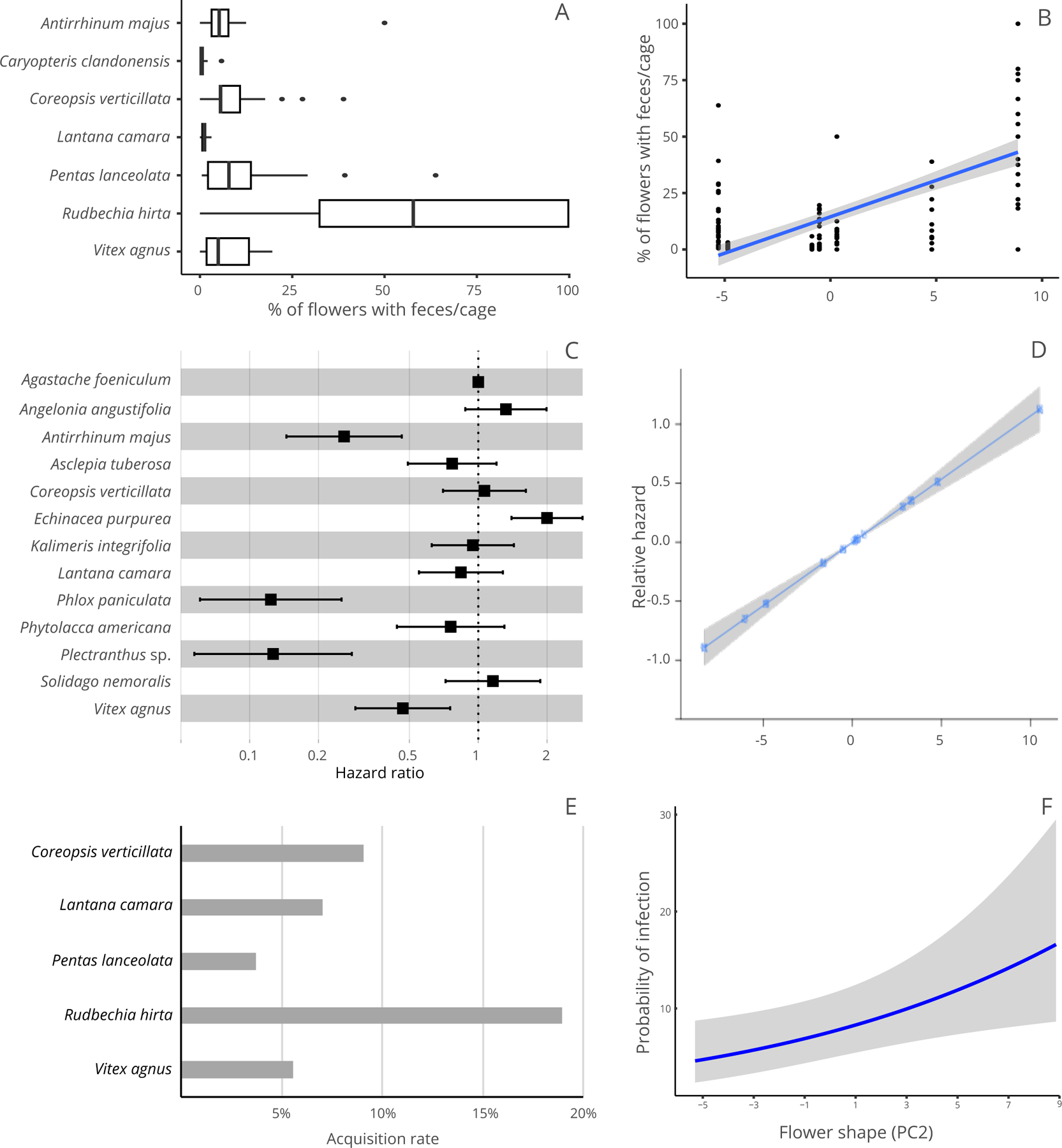Figure 1.

Effect of species and floral shape on the three steps of C. bombi transmission on flowers. A) Boxplot of the percentage of flowers per cage that had bee feces on them. Rudbeckia hirta had significantly more flowers with feces than other species. B) Effect of floral shape on the percentage of flowers per cage that had bee feces on them. As flowers get wider and shorter they collect more feces. C) Hazard ratio of each plant species to C. bombi. Plant species that present high hazard reduce C. bombi survival, compared to the reference species Agastache foeniculum. D) Effect of floral shape on the relative hazard. Wider and shorter flowers increase the hazard for C. bombi. E) Probability of a bee getting infected with C. bombi in a single visit to a contaminated flower. F) Effect of floral shape on the estimated probability of infection in a single visit to a contaminated flower. As flowers get wider and shorter, the probability of infection increases. For figures B, D, and F, the shaded area represents the 95% CI.
